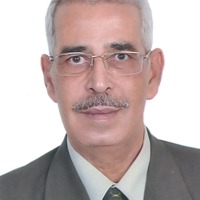Papers by Alain Joel Elong

Water, Mar 25, 2024
As open channel simulations are of great economic and human significance, many numerical approach... more As open channel simulations are of great economic and human significance, many numerical approaches have been developed, with the Godunov schemes showing particular promise. To evaluate, confirm, and extend the simulation results of others, a variety of first-and second-order FVMs are available, with Rusanov and Roe schemes being used here to simulate the demanding case of 1D and 2D flows following a dam break. The virtual boundary cells approach is shown to achieve a monotonic solution for both interior and boundary cells, and while flux computation is employed at boundary cells, a refinement is only rarely used in existing models. A number of variations are explored, including the TVD MUSCL-Hancock (monotone upwind scheme for conservation laws) numerical scheme with several slope limiters in a quest to avoid spurious oscillations. The sensitivity of the results to both channel length and the ratio of downstream to initial upstream water depth is explored using 1D and 2D models. The Roe scheme with a Van Leer limiter as a slope limiter is shown to be both fast and slightly more accurate than other slope limiters for this problem, but the Rusanov scheme with different slope limiters works well for 1D simulations. Significantly, the selection of an appropriate slope limiter is shown to be best based on the ratio of the downstream to upstream water depth. However, this study focuses on the special case where the ratio of the initial depth downstream to upstream of the dam is equal to or less than 0.5, and these outcomes are compared to theoretical results. The 2D dam-break problem is used to further explore first-and second-order methods using different slope limiters, and the results show that the Superbee limiter can be problematic due to an observed large dispersion in depth contours. However, the most promising approaches from previous studies are confirmed to deserve the high regard given to them by many researchers.
Journal of Hydraulic Research

Applied Sciences
As a result of urbanization, combined with the anthropogenic effects of climate change, natural e... more As a result of urbanization, combined with the anthropogenic effects of climate change, natural events such as floods are showing increasingly adverse impacts on human existence. This study proposes a new model, based on shallow water equations, that is able to predict these floods and minimize their impacts. The first-order finite volume method (FVM), the Harten Lax and van Leer (HLL) scheme, and the monotone upwind scheme for conservation laws (MUSCL) are applied in the model. In addition, a virtual boundary cell approach is adopted to achieve a monotonic solution for both interior and boundary cells and flux computations at the boundary cells. The model integrates the infiltration parameters recorded in the area, as well as the Manning coefficient specific to each land-cover type of the catchment region. The results provided were mapped to highlight the potential flood zones and the distribution of water heights throughout the catchment region at any given time, as well as that a...

38th IAHR World Congress - "Water: Connecting the World", 2019
This work investigates the effects of unsteady friction in a rapid filling pipeline with an entra... more This work investigates the effects of unsteady friction in a rapid filling pipeline with an entrapped air pocket. Existing one-dimensional transient pipe-filling models have primarily considered only steady friction factors, but these same models have tended to underestimate the rate of attenuation of the pressure oscillations. Brunone's unsteady friction model is combined here with both local inertia and wall friction effects to predict pressure fluctuations using the method of characteristics. Two approaches, Vardy's analytically deduced shear decay coefficient and the traditional trial and error method, are used to determine the Brunone's friction coefficient k. Numerical results predicted by the steady friction model, the quasi-steady friction model and the unsteady friction model are compared to each other and to the results obtained from laboratory measurements in a rapidly filling vertical pipe containing an entrapped air pocket. The models that account for unsteady friction are shown to better reproduce measured pressure oscillations.











Uploads
Papers by Alain Joel Elong